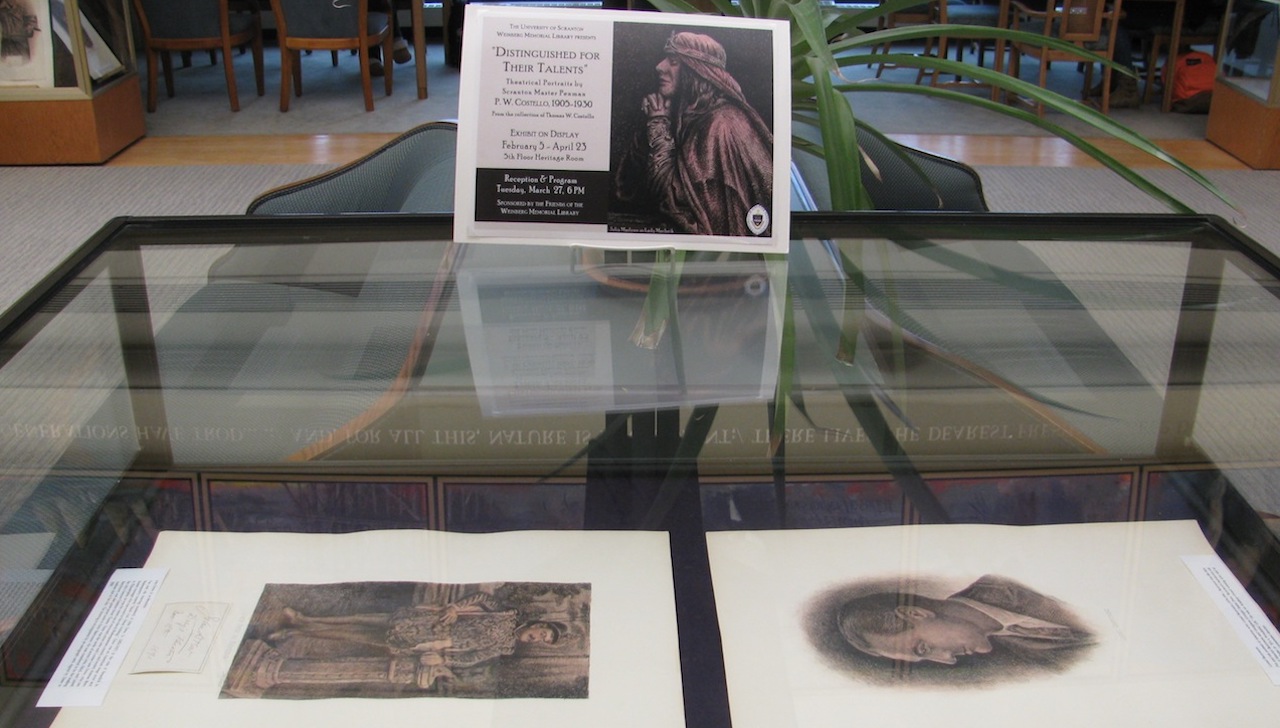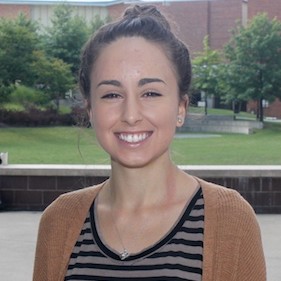Theatrical Talent Thrives at Turn of 20th Century

“In the 1900s, a huge shift in attitude toward the performance of Shakespeare on the stage was taking shape. The latter part of the 19th century saw the conclusion of what we might call actor’s theater, while the start of the 20th century featured what we term author’s theater,” said Michael Friedman, Ph.D., professor of English and theatre at The University of Scranton, in his lecture “Shakespeare on the Stage in 1900: From Actor’s Theater to Author’s Theater.”
Dr. Friedman’s talk was one of two lectures presented at an art exhibit reception for P.W. Costello’s theatrical portraits, which are currently on display in the Heritage Room of Weinberg Memorial Library.
Dr. Friedman described the transition between these two types of theatrical performances and discussed specific Shakespearian examples with attendees.
“The main difference between these two attitudes is that in actor’s theater, the work of performers and designers are the main focus. In author’s theater, the actors and designers exist to serve the play by presenting the author’s intentions,” said Dr. Friedman.
Also at the reception, Thomas Costello spoke about master penman P.W. Costello’s career as well as his great grandfather’s collection, “Distinguished for Their Talents,” which is comprised of pen and ink portraits of theatrical personalities drawn between 1905 and 1930.
“There is a good cross-sampling of his work across all genres – drama, tragedy, Shakespearian, comedy, histories, music – it’s all represented here. And it’s all unique. There’s different styles, colors, subject matter, poses,” said Thomas Costello.
“His reading, his interest in literature, his proximity to the heart of the theater district were all developing at a time where economic, industrial and cultural growth were growing in the 1900s – leading to an interest in the arts. And that’s why theaters thrived. And he loved theater,” said Thomas Costello of his great grandfather.
Thomas Costello spoke to community members, faculty and students about specific portraits in the collection and P.W. Costello’s self-taught artistic practices that defined him as one of the best engrossers and illustrators in the country.
Following the presentations of the two speakers, attendees had the opportunity to ask questions and explore Costello’s exhibit on the fifth floor of the library.
The exhibit will be on display through April 23 during normal library hours. Images of the portraits are also available online through the library’s digital collections website. For more information, email archives@scranton.edu or call 570-941-6341.







